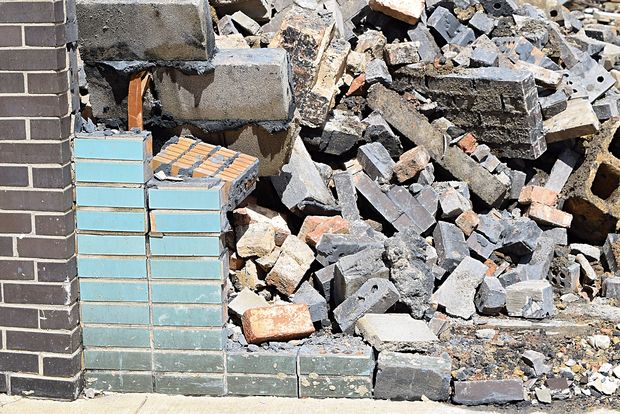EDGEWATER — A former auto showroom where Maybelline cosmetics founder and Edgewater resident Tom Lyle Williams custom-ordered expensive cars was demolished this week.
The single-story building at 6335-39 N. Broadway was designed by Percival Johnstone and built in 1922 by Isadore Burnstine as part of the North Broadway "Motor Row" boom of the early 1920s.
Motor World magazine described the dealership's Aug. 25, 1922, debut in Edgewateras an "elaborate function" which transformed the showroom into a ballroom with music, entertainment, food and only the finest Paige, Jewett and Overland models on display.
The edifice showcased a "cream white tile" and "exceedingly high ceilings" with a "handsome indirect lighting" scheme to highlight the cars' glisten. Its exterior ornate terra cotta embellishments were designed by the Northwestern Terra Cotta Co.
"It is quite a remarkable salesroom to be located as far out of metropolitan activities as 6335 Broadway," the article said.
By Monday afternoon, that opulent image was replaced by a pile of rubble at the site.
Wrecking crews dismantled the brick building, leaving little intact, save for a small corner of turquoise tiles that soon, too, would topple over.
The future of the property is unknown.
In 2012, Robert and Nancy Kopf were relieved of the deed, and the parcel was acquired by Loyola University.
Nancy Kopf was a longtime corporate treasurer and secretary for Excel who died in 2014.
Loyola did not respond to a request for comment.
 A small portion of the building's remaining turquoise facade. [DNAinfo/Linze Rice]
A small portion of the building's remaining turquoise facade. [DNAinfo/Linze Rice]
Though Monday was its last day, on the showroom's very first day, the 10,000-square-foot building was an impressive feat not only in design, but in that it was a solidifying step in the trend toward chain stores.
The location was one of several belonging to Burstine's Broadway Motor Sales Co,, which also included showrooms formerly in the Broadway Bank building at 5960 N. Broadway, L.A. Fitness building at 6001 N. Broadway and the Ismaili Center at 6259 N. Broadway.
Each location was under the Burnstine family umbrella, but sold different lines of cars: Chrysler, Studebaker, Chevrolet and more.
In 1934, while most of Chicago and the rest of the country were reeling from the Great Depression, the recently razed Hon, Smithson & Raymond Packard dealership at 6335 N. Broadway was slinging custom Packards to high rollers like Tom Lyle Williams, whose booming company, Maybelline cosmetics, was just a short jaunt away.
That year, Williams had a custom car like one he'd seen at the the Chicago World's Fair a Packard Dietrich Sport Sedan — delivered to Maybelline's Edgewater offices in a dramatic showing, infuriating many around him. He shelled out $7,000 for the car, or about $128,000 today.
"Mr. Williams’ vision resulted in one of the most spectacular Packards ever built — an extraordinarily elegant V-windshield sedan, possessing graceful proportions and a myriad of bespoke features," ClassicDriver.com wrote of Williams and his 1934 car.
In the 1940s and '50s, Motor Row saw a decline, and the showrooms converted into new businesses.
Last used as a car dealership to showcase Studebakers, the building was taken over by the Excel Specialty Corp., which became the company most associated with the building for its elegant silver, cursive name emblazoned on the building's turquoise tile facade — a feature that remained until it was removed after Loyola acquired the property in 2012.
 In the top row, a photo of the building as its first iteration as an auto showroom in 1922, compared with its state as the former Excel Specialty Co. in 2011. Beneath, Tom Lyle Williams with his prized Packard at his home and also in front of the Maybelline offices in Edgewater. [Architectural Record; Google Maps; Provided/Sherrie Williams]
In the top row, a photo of the building as its first iteration as an auto showroom in 1922, compared with its state as the former Excel Specialty Co. in 2011. Beneath, Tom Lyle Williams with his prized Packard at his home and also in front of the Maybelline offices in Edgewater. [Architectural Record; Google Maps; Provided/Sherrie Williams]









